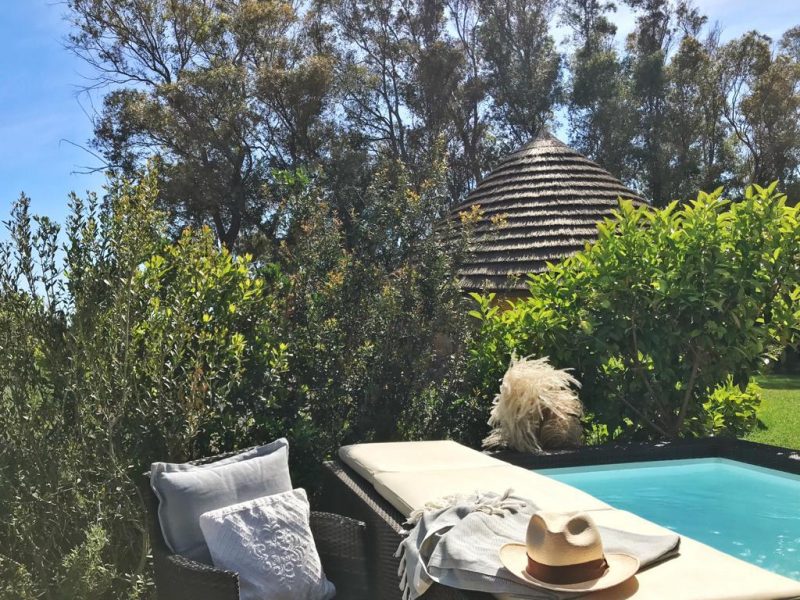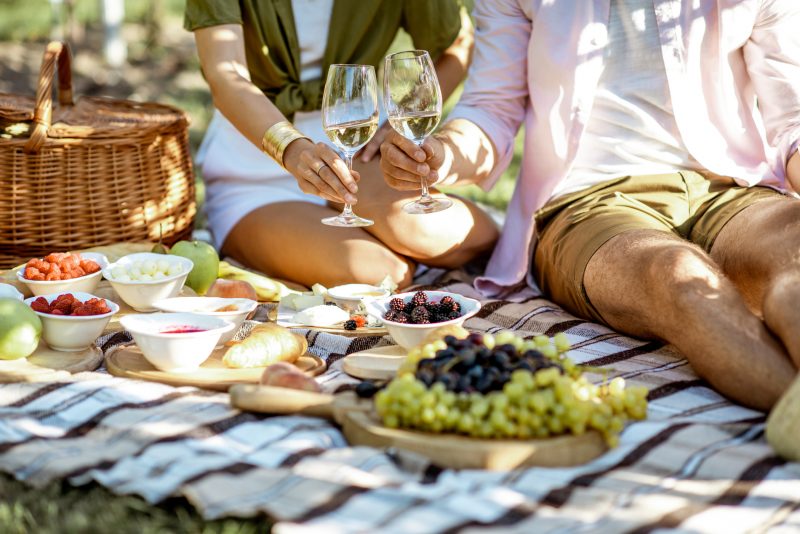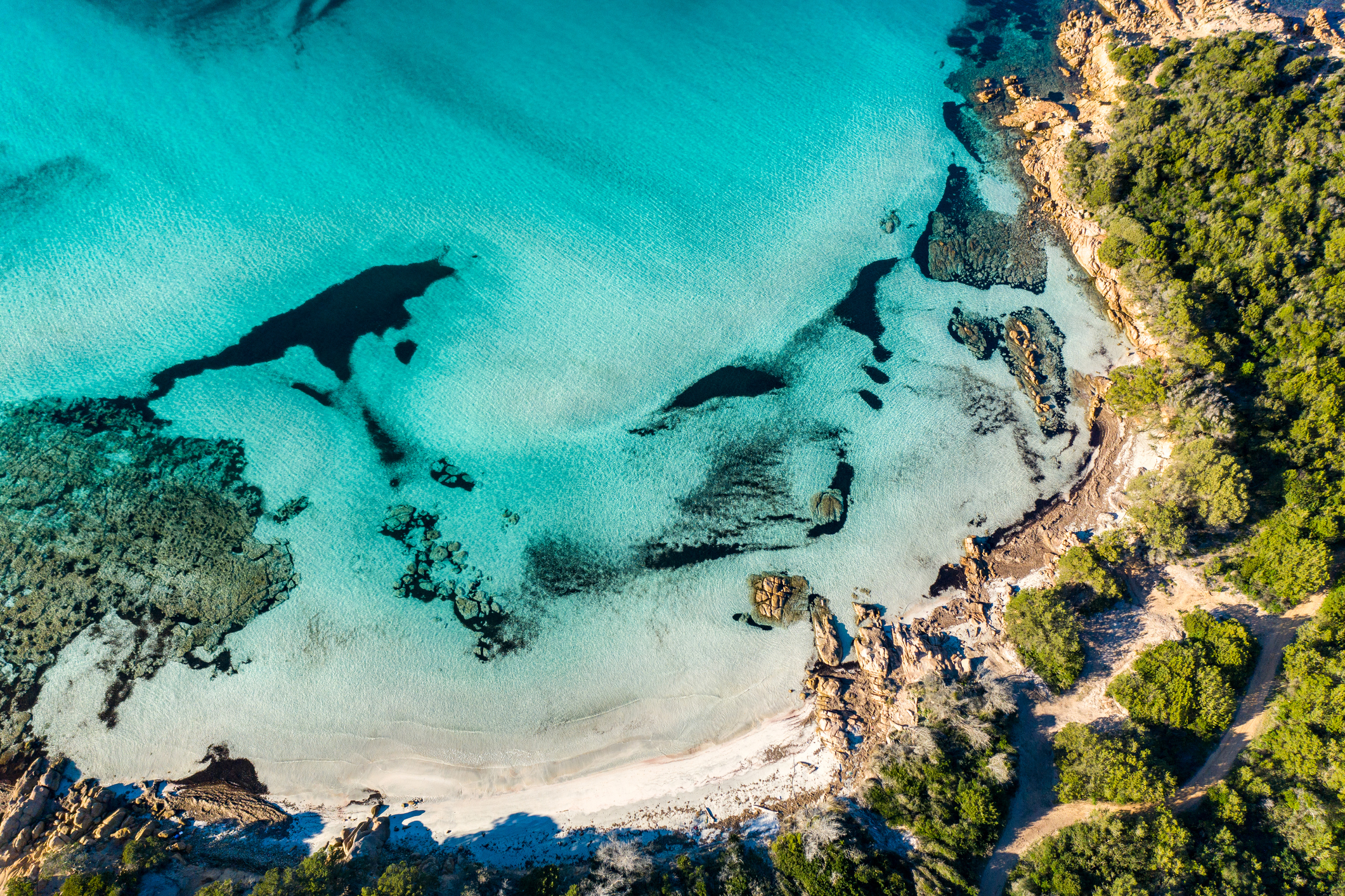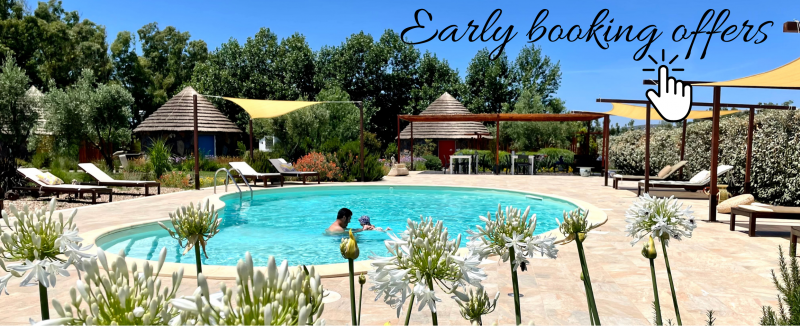What to visit in Sardinia
Sardinia is a fascinating territory characterised by ancient traditions, mysterious legends, breathtaking nature and some of the most beautiful beaches in the world. This Island will lead travellers to discover its authenticity and the simple, but essential, things in life.
Sardinia has 2000 kilometers of coastline. The Island has natural ecosystems and wonderful beaches. Sand dunes, coves, cliffs, and quartz beaches, protected marine areas and naturalistic oases, salt ponds inhabited by pink flamingos. But Sardinia also has mountains, canyons, waterfalls, small picturesque villages and big cities, many of them well known for their crafting of coral and filigrana jewellery and ceramics.
The Island has also a remarkable enogastronomic culture. A thousand-year history of indigenous grape varieties characterizes the region. During your stay in Sardinia do not miss the opportunity to participate in a vineyard tour with wine tasting.
North Sardinia
Northern Sardinia boasts some of the most beautiful beaches and archipelagos on the island. There are many places to visit: Stintino, the red island, the Costa Paradiso, the Maddalena archipelago, the island of Tavolara, the famous Costa Smeralda.
The nature in this part of the island is always green and offers breathtaking views with its characteristic landscapes of rocks shaped by the wind on a crystalline sea.
The Maddalena Archipelago
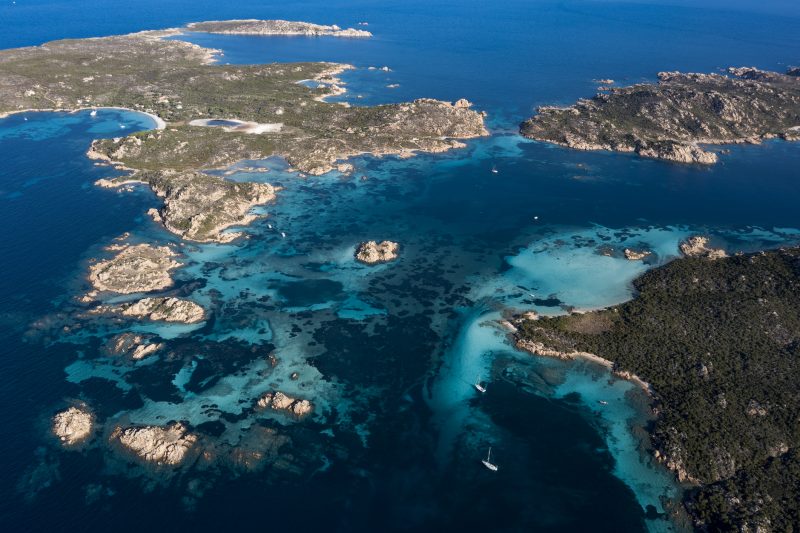 Became a national park in 1994 for its naturalistic value, the Maddalena archipelago, located in the Bocche di Bonifaccio between Sardinia and Corsica, is made up of about sixty islands and islets surrounded by a turquoise sea. The largest and best known islands are Spargi, where the beautiful beach of Cala Corsara is located, the Island of La Maddalena, the Island of Santo Stefano and the Island of Caprera, where the splendid beach of Cala Coticcio is located. Finally, the Island of Budelli hosts one of the most beautiful beaches in the world, the Pink Beach, whose particular color comes to life from the fragments of coral and shells of which it is composed.
Became a national park in 1994 for its naturalistic value, the Maddalena archipelago, located in the Bocche di Bonifaccio between Sardinia and Corsica, is made up of about sixty islands and islets surrounded by a turquoise sea. The largest and best known islands are Spargi, where the beautiful beach of Cala Corsara is located, the Island of La Maddalena, the Island of Santo Stefano and the Island of Caprera, where the splendid beach of Cala Coticcio is located. Finally, the Island of Budelli hosts one of the most beautiful beaches in the world, the Pink Beach, whose particular color comes to life from the fragments of coral and shells of which it is composed.
Stintino
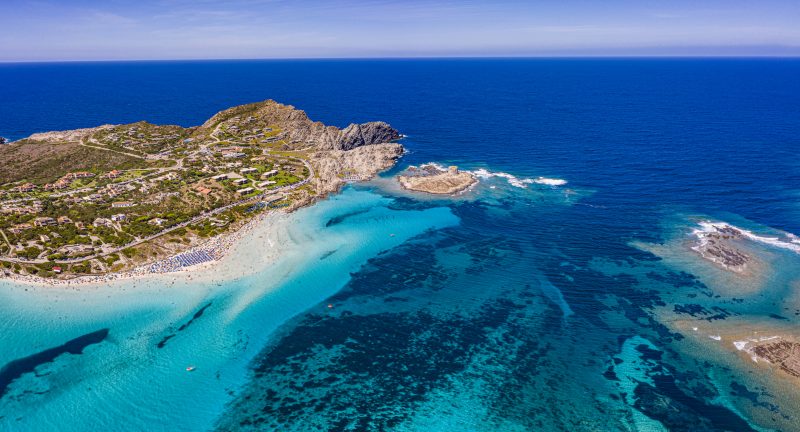 Located in the extreme north-western part of Sardinia, Stintino, originally a fishing village, is today one of the most famous touristic destinations of the Island. One of the most beautiful beaches in Sardinia, La Pelosa, characterized by sandy seabed and crystal clear water, is located here.
Located in the extreme north-western part of Sardinia, Stintino, originally a fishing village, is today one of the most famous touristic destinations of the Island. One of the most beautiful beaches in Sardinia, La Pelosa, characterized by sandy seabed and crystal clear water, is located here.
From Stintino it is possible to reach the island of Asinara by ferry, a protected marine area for the protection of its faunal species, including the unique white donkey from which the island takes its name.
West coast of Sardinia
The West Coast offers breathtaking landscapes that are still wild and unspoiled. This area of the Island extends from Capo Caccia in the north, near the city of Alghero, to Capo Spartivento in the south. This is where you can find the largest natural desert in Europe, marine protected areas and naturalistic oases, archaeological cities, necropolis, nuraghi and some of the most beautiful beaches and cities of Sardinia.
The Sinis Peninsula
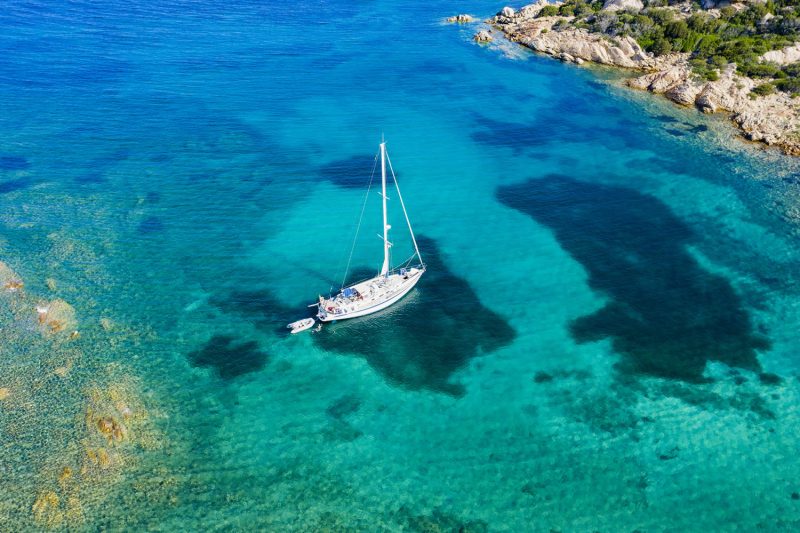 There are hidden places and still little known areas of Sardinia, wild and able to amaze. One of these places is the Sinis peninsula, a naturalistic and archaeological heritage, recognized by the European Commission as an ‘Eden’ destination (European destinations of excellence). With its nineteen kilometers of diverse natural ecosystems and stunning beaches, this peninsula has it all: sand dunes, cliffs, coves, cliffs and quartz beaches, marine protected areas and naturalistic oases, salt ponds inhabited by pink flamingos, archaeological cities and nuraghi, necropolis and statues of giants.
There are hidden places and still little known areas of Sardinia, wild and able to amaze. One of these places is the Sinis peninsula, a naturalistic and archaeological heritage, recognized by the European Commission as an ‘Eden’ destination (European destinations of excellence). With its nineteen kilometers of diverse natural ecosystems and stunning beaches, this peninsula has it all: sand dunes, cliffs, coves, cliffs and quartz beaches, marine protected areas and naturalistic oases, salt ponds inhabited by pink flamingos, archaeological cities and nuraghi, necropolis and statues of giants.
In the northern part of the peninsula are the beautiful beaches of Putzu Idu, S’Arena Scoada, Sa Mesa Longa and S’Archittu. In the southern part you will find the famous quartz beaches such as Is Arutas, Mari Ermi and Maimoni.
The heterogeneity of the landscapes allows you to relax in a quiet and peaceful corner or take advantage of the mistral wind to have fun with water sports such as surfing, windsurfing, kayaking or paddle. Those who love adventure can choose to visit the archaeological remains found in the seabed while snorkeling or visit the Phoenician city of Tharros, enjoy a day on a sailing boat, or visit the splendid island of Malu Entu, a protected naturalistic area. The peninsula does not only count on beaches, archeology, and wonderful landscapes, but also on a remarkable enogastronomic culture. This food tradition includes delicious shellfish dishes, fresh pasta and fish eggs named bottarga di Cabras. All to be flavored with the aromatic herbs of the Mediterranean Maquis, rosemary, mint and oregano that grow spontaneously throughout the peninsula. A thousand-year history of indigenous grape varieties characterizes the countryside of this geographic area. The most famous is the vernaccia, an ancient vine whose meditation wine, aged through the leavening of native levites, called flor yeasts, is particularly prized for its characteristics and its unmistakable aroma.
Bosa
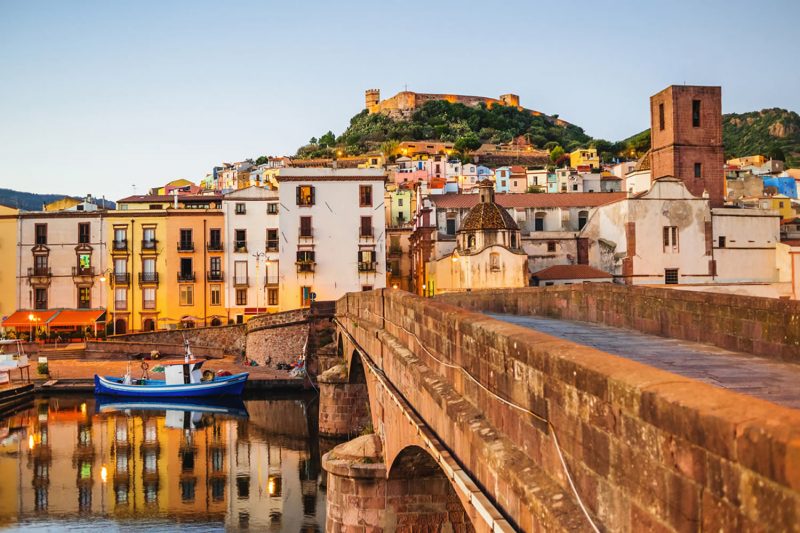
Bosa is an ancient and colorful village crossed by the only navigable river in Sardinia, the Temo.
The historic district of Sa Costa is characterized by colorful houses and small pedestrian streets through which you arrive at the Malaspina Castle, in the upper part of the city. From here it is possible to admire the beauty of Bosa, its river and its coast.
Bosa is also famous for its Malvasia DOC, a wine made from white berried grapes from this specific area of Sardinia, with an intense and characteristic olfactory profile and a sweet and harmonious palate.
From the city of Bosa we suggest you to take the Provincial panoramic road 105 which connects the city to Alghero. The coast is a succession of cliffs with breathtaking views. During the journey you can stop for a swim in one of the many splendid coves that are along the way.
Alghero
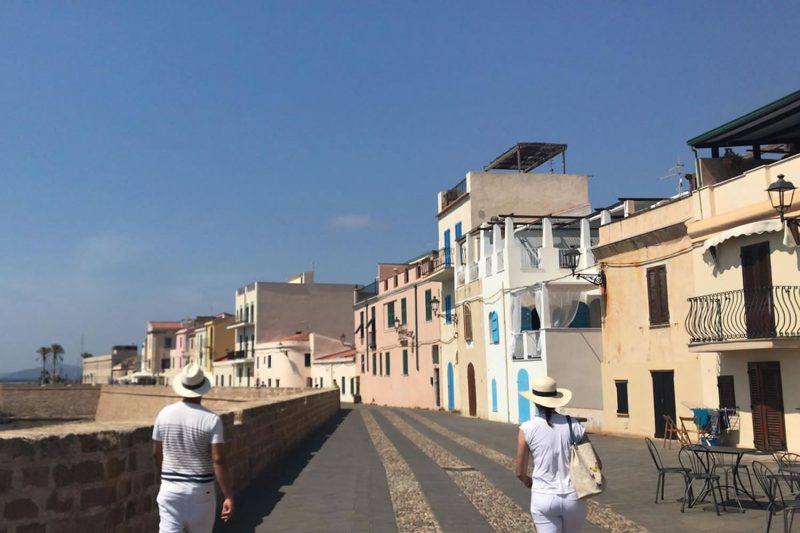
Alghero is a city on the northwestern coast of the Island, elegant and with a beautiful historic center. Its coastline is known as Riviera del Corallo, as the corals that inhabit it are considered to be of the highest quality. This city of Catalan origins is in fact famous for the processing of red coral, filigree jewels and ceramics. In the streets of the center there are many small shops where you can buy coral jewelry and local crafts. Do not miss the walk along the ramparts of the port.
Costa Verde
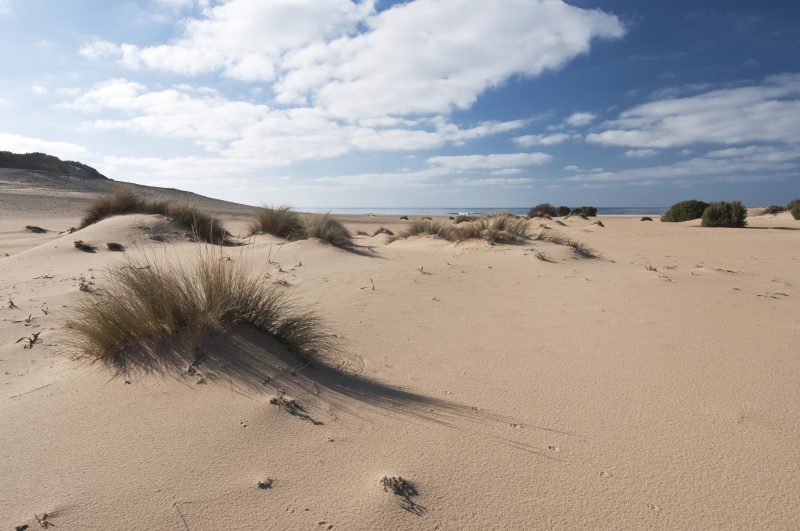 The Costa Verde, The green coast, is a varied territory, characterized by the plants of the Mediterranean Maquis, especially junipers, cliffs and sand dunes. This is where the largest natural desert in Europe is found. To get there, you will walk through truly unique landscapes: the ancient mines of Ingurtosu, now part of the geo-mining park of Sardinia, and sandy paths up to the largest sand dunes in Europe. But in what would appear like a Saharan landscape, looking into the distance, it is possible to see the sea on the horizon. It is Piscinas beach, the “pearl” of the Costa Verde, an oasis of biodiversity and beauty.
The Costa Verde, The green coast, is a varied territory, characterized by the plants of the Mediterranean Maquis, especially junipers, cliffs and sand dunes. This is where the largest natural desert in Europe is found. To get there, you will walk through truly unique landscapes: the ancient mines of Ingurtosu, now part of the geo-mining park of Sardinia, and sandy paths up to the largest sand dunes in Europe. But in what would appear like a Saharan landscape, looking into the distance, it is possible to see the sea on the horizon. It is Piscinas beach, the “pearl” of the Costa Verde, an oasis of biodiversity and beauty.
Eastern coast of Sardinia
The east coast of Sardinia really leaves you breathless. Its landscapes have a timeless charm. Kilometers of cliffs overlooking a crystalline sea, with green and turquoise tones. The Gulf of Orosei, on which Cala Gonone stands, is the starting point for visiting the splendid and famous coves: Cala Goloritzè, Cala Luna, Cala Cartoe, Cala Mariolu, Cala Sisine and the Bue Marino caves.
But as we said at the beginning, Sardinia does not only have beautiful coasts. The hinterland of Eastern Sardinia will take you to discover the heart of the Island, which is authentic and little known. The Supramonte, a very ancient mountain complex with an extension of 35,000 hectares, is made up of forests, plateaus, gorges, water springs, caves inhabited by wild boars and mouflons. Here is one of the largest and deepest canyons in Europe, Su Gorroppu gorge, where you can go on spectacular excursions. Orgosolo, Baunei, Dorgali, Oliena: the characteristic and ancient villages of this area will introduce you to the most authentic Sardinia and savor traditional dishes.
Cala Goloritzè e Cala Luna
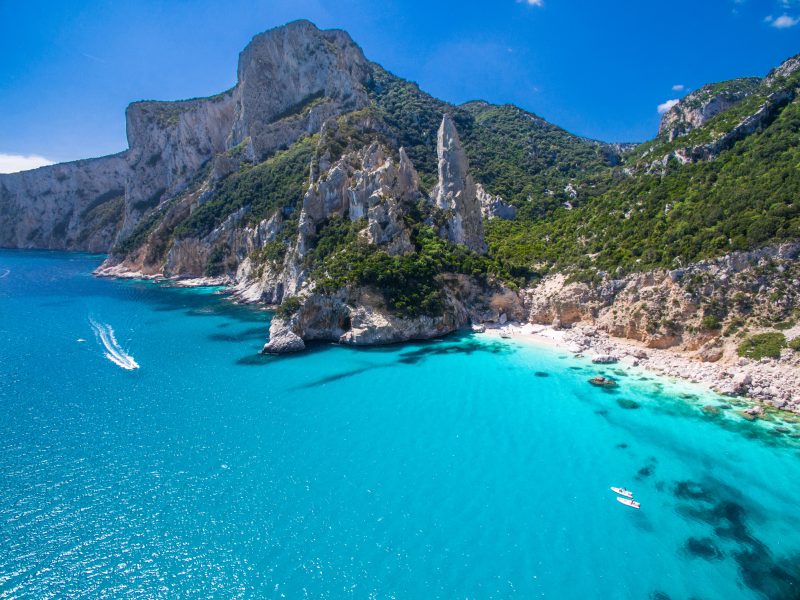 These coves are spectacular. They can only be reached by boat from Cala Gonone or with a four-hour trek from Supramonte di Baunei.
These coves are spectacular. They can only be reached by boat from Cala Gonone or with a four-hour trek from Supramonte di Baunei.
Cala Goloritzè, in the municipality of Baunei, was declared a World Heritage Site by Unesco in 1995. The beach, made up of very light stones, overlooks a crystalline sea. Behind it, rocky spiers and Mediterranean scrub.
Cala Luna, between the territories of Barbagia and Ogliastra, is an 800-meter strip of sand that rises between the sea and the mouth of a stream that forms a small lake surrounded by Mediterranean scrub plants. A unique show not to be missed.
Orgosolo
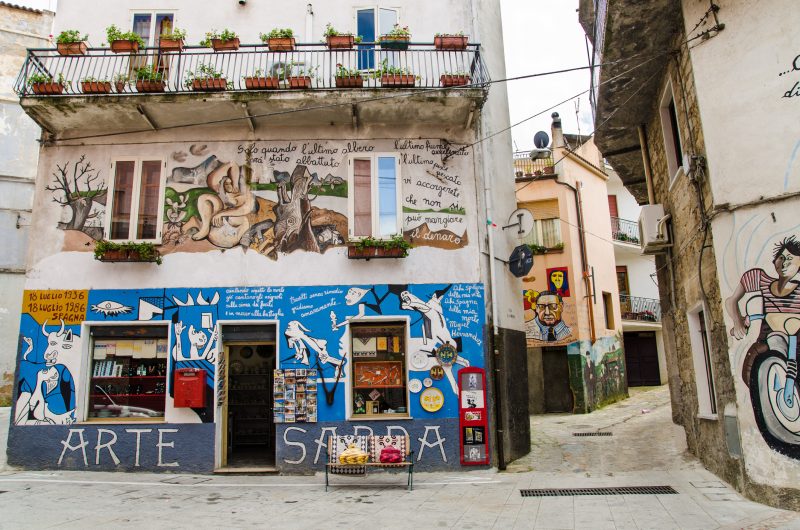
The village, heart of Barbagia region, is the guardian of ancient knowledge and traditions. The story is told on the walls, thanks to the beautiful murals of its streets that have made it famous. The village is also known for its excellent gastronomy. Here, in fact, you can taste some of the classic traditional recipes.
Orgosolo is also the homeland of canto a tenore, a polyphonic singing and central element of Sardinian pastoral culture, so much so that it is recognized as a UNESCO World Heritage Site.
South Sardinia
Southern Sardinia is renowned for its enchanting coasts and Cagliari, the capital of the island, is located here. In this part of Sardinia there is so much to visit: Costa Rei, Villasimius, Chia, Capo Spartivento, the islands of Sant’Antioco and San Pietro, where Carloforte is located, the Iglesiente coast from which you can see the famous Faraglione di Pan di Zucchero and the beautiful coast of Teulada.
Cagliari
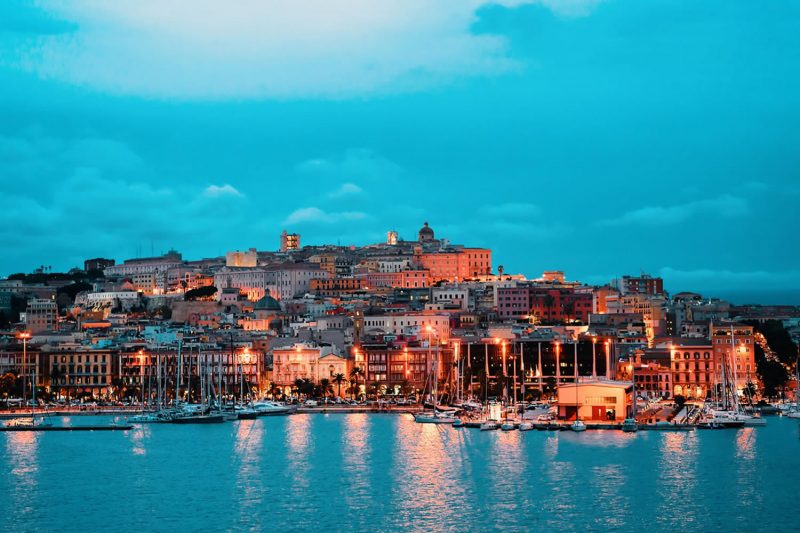 Cagliari is the capital and largest city of Sardinia, rich in historical and archaeological sites and well known for the breathtaking sea views from its hills. The historic center, with its characteristic narrow streets and shops, the upper castle district and the top view of the city from the Bastion of Saint Remy deserve to be visited. As well as the Poetto area, the beach and promenade of the city with its bars and restaurants.
Cagliari is the capital and largest city of Sardinia, rich in historical and archaeological sites and well known for the breathtaking sea views from its hills. The historic center, with its characteristic narrow streets and shops, the upper castle district and the top view of the city from the Bastion of Saint Remy deserve to be visited. As well as the Poetto area, the beach and promenade of the city with its bars and restaurants.
Villasimius
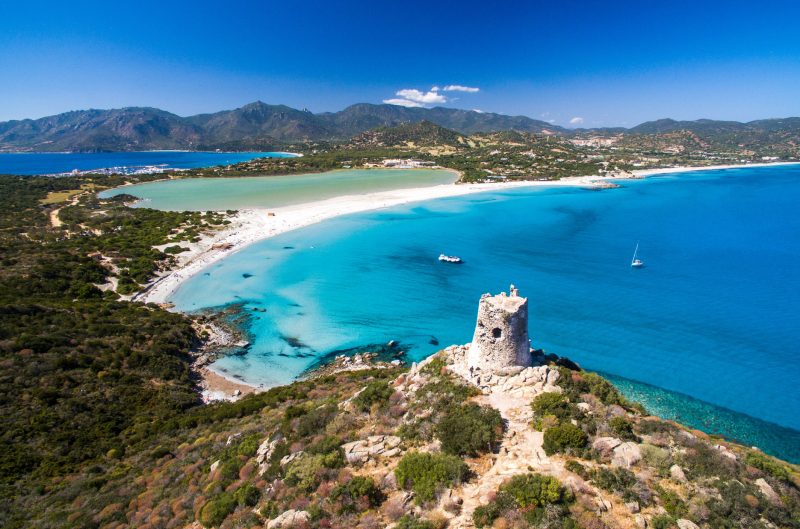
Villasimius is a famous tourist destination in southern Sardinia. Its coast is known for its fine sandy beaches, the cliffs of the Capo Carbonara promontory and a spectacular Mediterranean Maquis. All the beaches of this coast deserve to be visited but our favorite is Punta Molentis which is located in the panoramic road between Villasimius and Costa Rei. The peculiarity of this beach is to be made up, on one side, of fine sand and crystalline water, but behind it granite rocks, Mediterranean scrub and a turquoise sea.
Chia
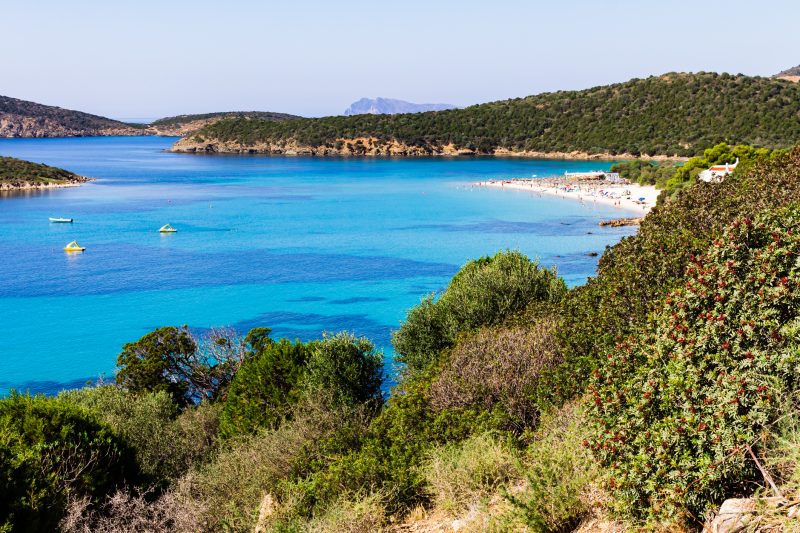
Chia is an ancient Phoenician village whose coast is full of beautiful beaches and archaeological areas, such as the famous city of Nora. From the Capo Spartivento lighthouse to the Torre di Capo Malfatano there is a succession of beaches, one more beautiful than the other. We suggest you to visit the one of Tuerredda, crystal clear sea and fine sand, sheltered from the mistral and overlooking the small island of Tuaredda.
Carloforte
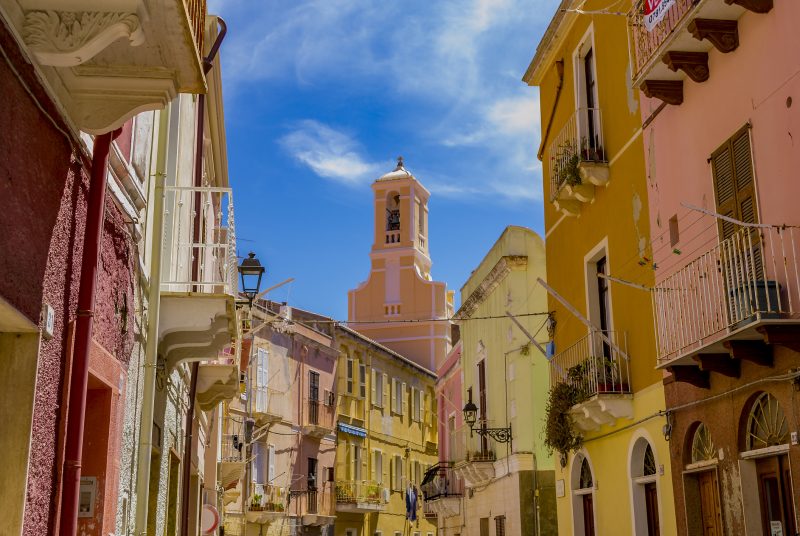
Located on the island of San Pietro, Carloforte is a fishing village of Ligurian origins. The seaside village is characterized by colorful alleys and a small harbor and is famous for its gastronomy, especially for tuna. In fact, the island hosts an international gastronomic event every year, the Girotonno, with culinary competitions and show cooking in the streets of the port.
Nuraghe di Barumini
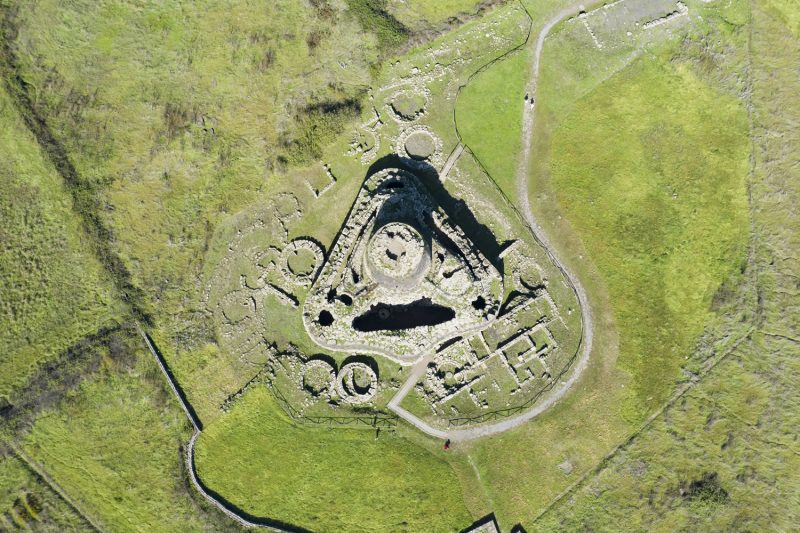
The most ancient and important civilization in Sardinia -dating back to 18th century BCE in the Bronze Age- has been the Nuragic Civilization. In Sardinia you can find more than 7000 nuraghi, the cylindrical stone constructions typical of the Nuragic Civilization.
Su Nuraxi di Barumini is located in the central-southern part of Sardinia. It is the most famous nuragic complex on the island and dates back to the late Bronze Age (12th century BC). Recognized by UNESCO as a World Heritage Site in 1997, it is a must on a trip to Sardinia.
Where to stay in Sardinia
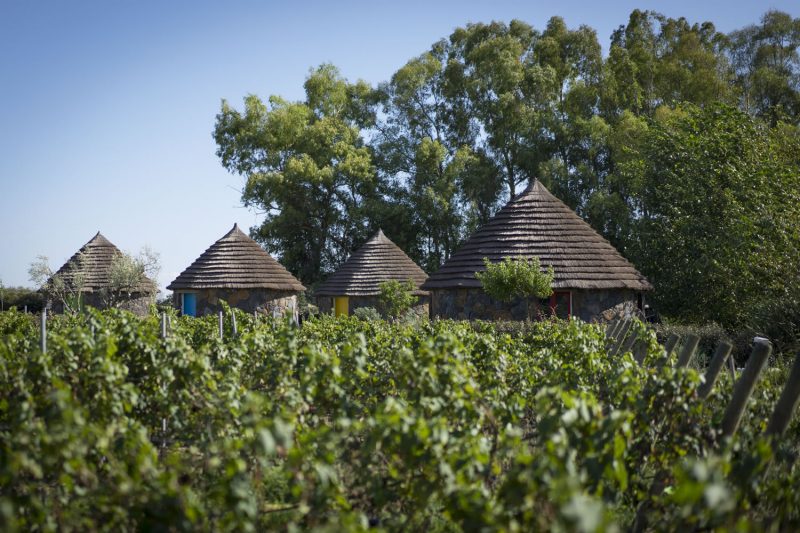 On the west coast of Sardinia, in a central position to visit during the day all the splendid places recommended in this article, you can enjoy a life experience in our luxury boutique hotel and agritourism. Here you can stay in a suite Pinnetta, inspired by the ancient conical-shaped buildings typical of Sardinia. Each has a private swimming pool and a garden with a relaxation area and is surrounded by vineyards and mountains, immersed in the serenity of a peaceful countryside. You can also enjoy a stay in our Farm House Suites, located in the manor house of the estate. The expertly chefs of this wine farm will delight you every evening with a high-level food and wine culinary experience.
On the west coast of Sardinia, in a central position to visit during the day all the splendid places recommended in this article, you can enjoy a life experience in our luxury boutique hotel and agritourism. Here you can stay in a suite Pinnetta, inspired by the ancient conical-shaped buildings typical of Sardinia. Each has a private swimming pool and a garden with a relaxation area and is surrounded by vineyards and mountains, immersed in the serenity of a peaceful countryside. You can also enjoy a stay in our Farm House Suites, located in the manor house of the estate. The expertly chefs of this wine farm will delight you every evening with a high-level food and wine culinary experience.
After a day spent visiting the beauties of the Island, a tasting dinner menu awaits you to discover the flavors and the best wines of Sardinia, under a glass pergola whose roof opens onto the summer sky of Sardinia.
